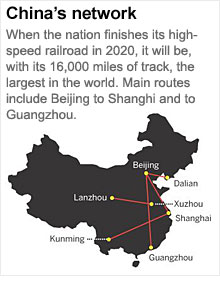Flawed argumentation on transit and high speed rail
I've been meaning to write about Washington Post columnist Robert Samuelson's screed on Monday against high speed rail ("A Rail Boondoggle, Moving at High Speed") all week, and in the meantime, many others have jumped in with excellent responses, in particular the Transport Politic's Yonah Freemark, in "Fighting Ourselves Over Funding for Intracity Versus Intercity Transportation."
I was going to focus on the irony of how the day before in the Post, they reviewed the book $20 Per Gallon: How the Inevitable Rise in the Price of Gasoline Will Change Our Lives for the Better by Christopher Steiner, in "What's The Big Idea?," and the author's point that as oil prices continue to rise, the newly higher price of gasoline will trigger significant changes in how we behave, our attitudes, and how commerce is organized.

Without cheap gasoline, the way U.S. society is organized--commerce, housing, spatial relationships, transportation--must change. From the review:
Each chapter forecasts our lives at a different price per gallon. At $6, public transportation becomes "the belle of the ball," with subways overflowing and new train routes proliferating. Driving deaths and obesity both plummet. Say goodbye to the little yellow school bus -- unaffordable.
At $8, "the skies will empty" as the airline industry contracts and ticket prices spiral upward. Vegas goes back to being just a desert.
When gasoline hits $10 -- a price Steiner believes is a decade away -- electric cars go mainstream. "Gasoline-slurping big boy toys," such as jet skis and snowmobiles, are out.
At $12, families abandon the suburbs and cluster in cities, sparking a renewal of commerce and culture from Atlanta to Cleveland.
A price of $14 per gallon of gas marks the death of Wal-Mart as global shipping costs become prohibitive. Manufacturing firms rediscover small-town America.
Onetime suburbs morph into farms for local markets when gasoline reaches $16, as the costs of transporting fresh food skyrocket. Eat your toro sushi while you can.
Finally, when gas prices top out at $18 or $20, high-speed rail takes over nationwide and nuclear power becomes "the clear choice" for most of our energy.
The last point, that eventually we won't have cheap oil to support cheap airplane flying, was one I made in an email to John McCarron, former Chicago Tribune journalist and now professor at Medill, in response to his July column "Slow down those fast-train dreams," in the Tribune. He snidly responded to my email with a jibe that I probably played with model railroads as a child.

I did, sure, but the point I was making is that his column made a faulty argument, that need for more investment in local transit in Chicago doesn't cancel out the need for more investment in national transit, along the lines of my proposed transit network typology.
... thinking about transportation networks in five overarching dimensions:
1. International -- connections between countries. (The map above shows a couple connections between the U.S. and Canada, and one connection from San Antonio to Monterrey, Mexico through Laredo.)
2. National -- anchors of a national transportation system, current anchors are the Interstate Highway system, the freight railroad system, and airplane travel. We do not have a national passenger railroad network presently. We do have a interstate bus transit system.
3. Regional -- multi-state connections -- for the most part these don't exist for transit, but do for freight railroad, airplane travel, intercity buses, and the Interstate highway system. The Northeast Corridor railroad passenger service offered by Amtrak is an example of such a transit network.
4. Metropolitan -- transit systems like the WMATA subway and bus system, the combined railroad, subway, bus, and waterborne transit services in the NYC or Boston regions.
5. Sub-metropolitan transit systems (in the DC region, locally provided services such as RideOn in Montgomery County Maryland or the Downtown Circulator in DC are examples of services within the subnetwork category of the Metropolitan Transit Network).
(From "Second iteration, idealized national network for high speed rail passenger service." For a delineation of the metropolitan transit network and the constituent subnetworks, see "Thinking about the transit network.")
To not plan for a future without cheap oil consigns the U.S. to a future of mediocrity. Meanwhile, the Chinese seem to understand the need to develop a national high speed railroad system, according to this recent article in Fortune Magazine, "China's amazing new bullet train." According to the article, the 70-mile trip between Tanjin and Beijing, usually a two-hour commute, now takes a half-hour on the high speed trains.


Labels: change-innovation-transformation, energy, environment and behavior, gasoline, media and communications, peak oil, transportation planning



0 Comments:
Post a Comment
<< Home